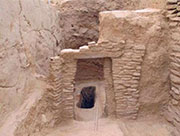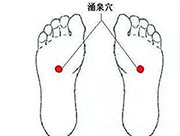

CAPE CANAVERAL, Fla. - Scientists analyzing data from a NASA spacecraft have found the first evidence that briny water flowed on the surface of Mars as recently as last summer, a paper published on Monday showed, raising the possibility that the planet could support life.
Although the source and the chemistry of the water is unknown, the discovery will change scientists' thinking about whether the planet that is most like Earth in the solar system could support present day microbial life.
"It suggests that it would be possible for life to be on Mars today," John Grunsfeld, NASA's associate administration for science, told reporters.
"Mars is not the dry, arid planet that we thought of in the past. Under certain circumstances, liquid water has been found on Mars," said Jim Green, the agency's director of planetary science.
The discovery was made when scientists developed a new technique to analyze chemical maps of the surface of Mars obtained by NASA's Mars Reconnaissance Orbiter spacecraft.
They found telltale fingerprints of salts that form only in the presence of water in narrow channels cut into cliff walls throughout the planet's equatorial region.
The slopes, first reported in 2011, appear during the warm summer months on Mars, then vanish when the temperatures drop. Scientists suspected the streaks, known as recurring slope lineae, or RSL, were cut by flowing water, but previously had been unable to make the measurements.
"I thought there was no hope," Lujendra Ojha, a graduate student at Georgia Institute of Technology and lead author of a paper in this week's issue of the journal Nature Geoscience, told Reuters.
Mars Reconnaissance Orbiter makes its measurements during the hottest part of the Martian day, so scientists believed any traces of water, or fingerprints from hydrated minerals, would have evaporated.
Also, the chemical-sensing instrument on the orbiting spacecraft cannot home in on details as small as the narrow streaks, which typically are less than 16 feet (5 meters) wide.
But Ojha and colleagues created a computer program that could scrutinize individual pixels. That data was then correlated with high-resolution images of the streaks. Scientists concentrated on the widest streaks and came up with a 100 percent match between their locations and detections of hydrated salts.
 |
Day|Week

 Stunning photos of air show in China’s V-Day parade
Stunning photos of air show in China’s V-Day parade Bikini models compete in oriental beauty pageant
Bikini models compete in oriental beauty pageant Archaeologists find 4,000-year-old sentry post in Shaanxi
Archaeologists find 4,000-year-old sentry post in Shaanxi Chinese couple claim title for Guinness world's tallest married couple
Chinese couple claim title for Guinness world's tallest married couple Left-behind child faces separation from father after summer vacation
Left-behind child faces separation from father after summer vacation Scenic Liangshan: Photographers' paradise
Scenic Liangshan: Photographers' paradise Amazing China-made flying car expected to serve in the army
Amazing China-made flying car expected to serve in the army Bikini boxing on opening day of a bar in Taiyuan
Bikini boxing on opening day of a bar in Taiyuan Have you met her? Campus belle from Wuhan University
Have you met her? Campus belle from Wuhan University Expert reveals top five longevity acupuncture points
Expert reveals top five longevity acupuncture points